Ever dreamt of living like royalty in India—but didn’t know where to start?
Picture this: You’re sipping champagne on a marble terrace overlooking Lake Pichola in Udaipur. The sun sets behind ancient palaces, painting the sky in shades of gold and crimson. A butler appears with warm towels scented with rose water. This isn’t a movie scene—this is what awaits you on a Luxury India Trip for Americans.
But here’s the problem: Most Americans planning a trip to India get overwhelmed. Where do you even begin? How do you separate the tourist traps from the authentic royal experiences? How do you ensure comfort without missing the magic?
Spoiler alert: Absolutely.
India isn’t just about crowded markets and budget backpacking. For those who want to experience the subcontinent’s grandeur without compromise, a Luxury India Trip for Americans opens doors to experiences that money usually can’t buy—private palace dinners, exclusive temple ceremonies, and train journeys that rival the Orient Express.
The solution? This complete guide will walk you through everything you need to create an unforgettable luxury Indian adventure. From maharaja-worthy accommodations to private jet transfers, we’ll cover every detail that transforms a good trip into a life-changing experience.

Why Choose a Luxury Trip to India?
Let’s be honest—India can be intense. The sensory overload, the crowds, the heat, the chaos. For many Americans, these challenges become barriers to experiencing one of the world’s most magnificent destinations.
A luxury approach solves these problems while amplifying the rewards. You still get the authentic cultural immersion, the spiritual awakening, the incredible history—but with air-conditioned comfort, private guides who speak perfect English, and accommodations that rival anything in Paris or New York.
Think of it this way: Would you rather spend your precious vacation time figuring out transportation and dodging aggressive vendors, or would you prefer having every detail handled while you focus on absorbing the magic? The choice becomes obvious when you realize that luxury travel in India often costs less than similar experiences in Europe or the United States.
Here’s what sets a Luxury India Trip for Americans apart from standard tourism:
Private Everything: Your guide, your driver, your experiences. No fighting crowds at the Taj Mahal when you can arrange a private sunrise visit. No sharing cramped train compartments when you can book an entire luxury carriage.
Authentic Access: Luxury operators have relationships that money can’t usually buy. Want to attend a private puja (prayer ceremony) at a famous temple? Done. Interested in a cooking lesson with a former royal chef? Arranged. These connections transform tourists into honored guests.
Seamless Logistics: India’s infrastructure can challenge even experienced travelers. Luxury services handle everything—airport transfers in air-conditioned vehicles, pre-cleared customs lines, medical support on standby, and contingency plans for everything from monsoons to political events.
Cultural Bridge: The best luxury experiences don’t isolate you from India—they help you understand it better. Your guides become cultural interpreters, explaining nuances that most visitors miss entirely.
Ride the Rails Like Royalty: Luxury Trains of India
Forget everything you think you know about train travel. India’s luxury trains aren’t transportation—they’re destinations themselves. These rolling palaces offer some of the most exclusive experiences available to international travelers.
1. The Maharajas’ Express

Often called the “Orient Express of India,” this train redefines luxury rail travel. Each cabin feels like a five-star hotel room, complete with personal butler service, gourmet dining, and panoramic windows that frame India’s landscapes like moving artwork.
The train offers multiple itineraries, but the “Heritage of India” route stands out for Americans seeking maximum royal exposure. You’ll visit Delhi, Agra (Taj Mahal), Ranthambore (tiger safari), Jaipur (Pink City), Bikaner (desert fortress), and Jodhpur (Blue City) over eight days.
What makes this special? The train stops at smaller stations where regular tourists never go. You’ll have private access to monuments that see thousands of visitors daily. At Ranthambore, you’ll stay in luxury tents with personal naturalists—not crowded safari jeeps.
Cost: Around $6,000-$8,000 per person for deluxe cabins, $12,000+ for presidential suites. Worth every penny when you consider that everything—accommodation, meals, guides, entrance fees, transfers—is included.
2. Palace on Wheels

Rajasthan’s signature luxury train takes you through the heart of royal India. This isn’t just about the destination—the journey itself becomes the experience. Each car is themed after a former princely state, decorated with authentic artifacts and royal memorabilia.
The week-long journey covers Jaipur, Sawai Madhopur, Chittorgarh, Udaipur, Jaisalmer, Jodhpur, Bharatpur, and Agra. But here’s what most people don’t know: Palace on Wheels guests get exclusive access to palaces and forts that close to regular tourists after hours.
In Udaipur, while other visitors crowd the City Palace during the day, you’ll attend a private evening reception with local nobility. In Jaisalmer, you’ll have the desert fort almost to yourself for sunset photography. These aren’t standard tour experiences—they’re arrangements made possible by decades of relationships between train operators and local royal families.
Stay Where Maharajas Lived: Top Heritage Hotels
India’s heritage hotels offer something no other destination can match: the chance to actually live in functioning palaces. These aren’t replicas or themed hotels—they’re actual royal residences converted into luxury accommodations, often still owned by the original royal families.
1. Taj Lake Palace, Udaipur

This marble palace floats on Lake Pichola like something from a dream. Built in 1746 as a summer retreat for Maharana Jagat Singh II, it’s now considered one of the world’s most romantic hotels. Every room overlooks the lake, and boat transfers to the mainland become part of the daily magic.
The experience goes beyond accommodation. You can arrange private boat rides to watch the sunset behind the City Palace, enjoy dinner on your private terrace with traditional musicians, or even book the entire Lily Pond Courtyard for a traditional Indian wedding ceremony (even if you’re already married—it’s that special).
What Americans love most: The personalized service feels authentic, not scripted. Staff members, many whose families have worked for the palace for generations, share stories and insights you won’t find in any guidebook.
2. Rambagh Palace, Jaipur
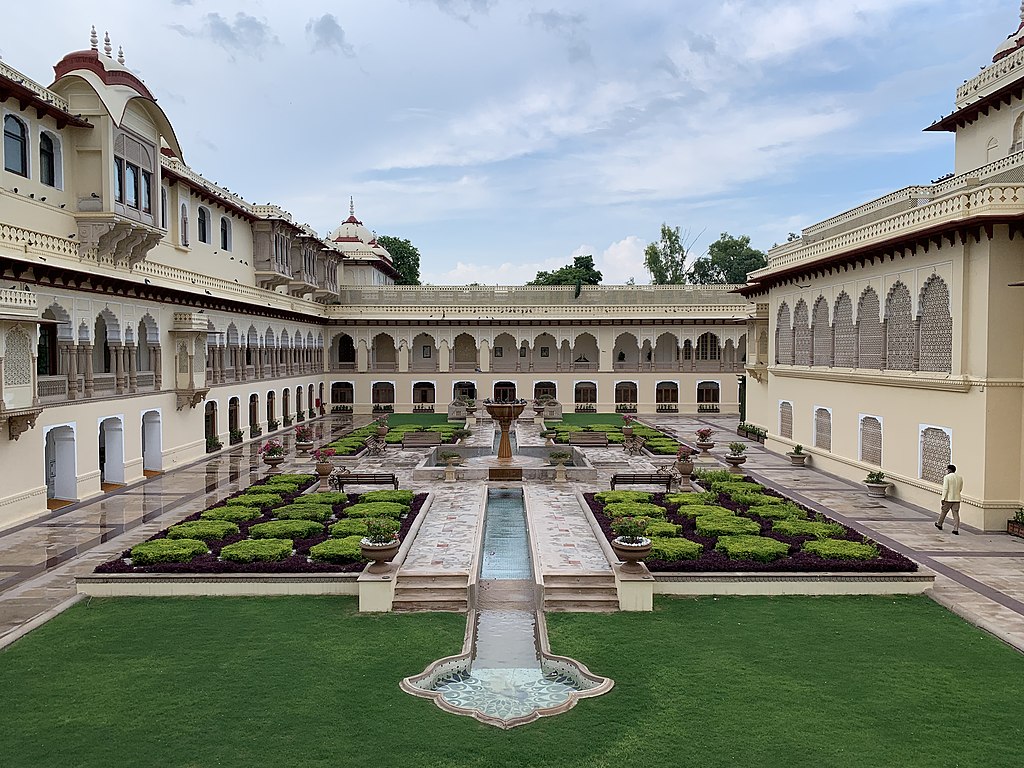
Once home to the Maharaja of Jaipur, this palace hotel sits on 47 acres of Mughal gardens. The rooms are individually decorated with period furniture, and the Suvarna Mahal restaurant serves royal Rajasthani cuisine in the former palace ballroom.
Here’s what sets Rambagh apart: You can book experiences that let you live like actual royalty. Take cooking classes with former royal chefs, learn traditional block printing from artisans who’ve worked for the royal family for generations, or enjoy high tea in the same pavilion where the Maharaja entertained British officials.
The palace also offers unique access to Jaipur’s attractions. Instead of joining tour groups at Amber Fort, you’ll have private access to sections usually closed to the public, including the Maharaja’s private chambers and the royal armory.
3. The Leela Palace, New Delhi

While not technically a heritage property, The Leela Palace captures royal grandeur with modern amenities that American travelers appreciate. The hotel’s design draws inspiration from Lutyens’ Delhi and Mughal architecture, creating spaces that feel authentically Indian without sacrificing contemporary luxury.
The standout feature? Le Cirque restaurant, where you can enjoy world-class cuisine while overlooking the diplomatic enclave. The hotel’s location puts you minutes from India Gate, the President’s House, and major museums, but far enough from Old Delhi’s chaos to maintain serenity.
For Americans conducting business in Delhi, The Leela offers something unique: a luxury base that helps you understand Indian culture while providing the comfort and efficiency you’re accustomed to.
4. Umaid Bhawan Palace, Jodhpur
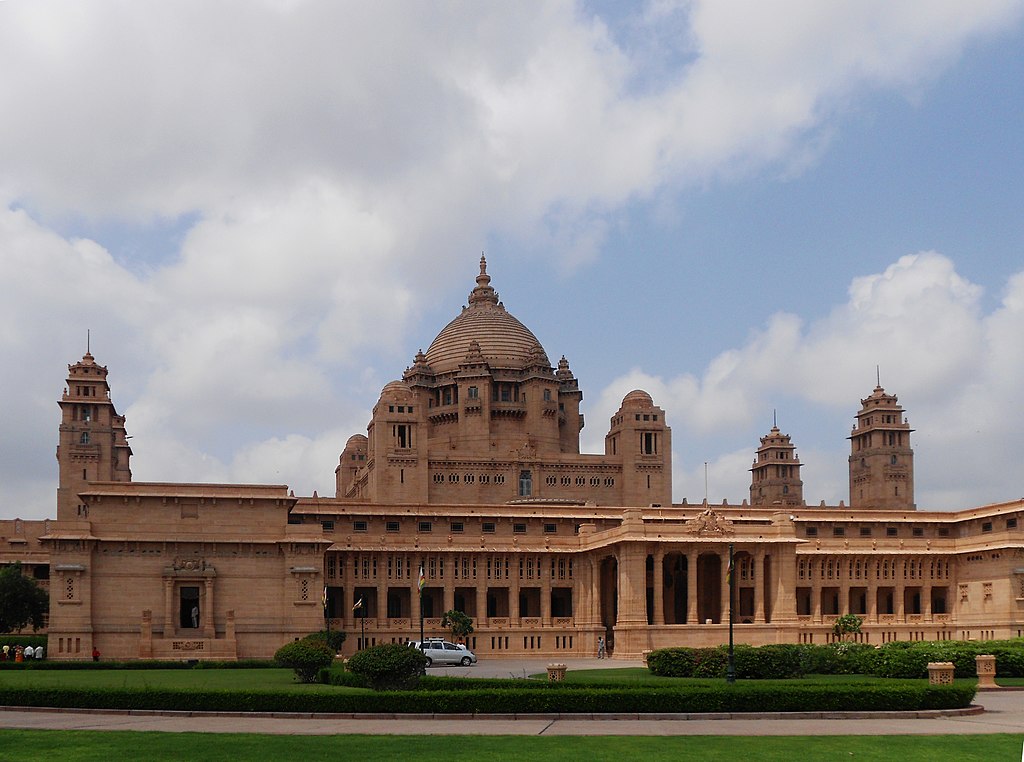
This palace defines grandeur. Built between 1928 and 1943, it’s one of the world’s largest private residences. Part of it remains the royal family’s home, part operates as a luxury hotel, and part houses a museum.
Staying here means you’re essentially a house guest of the Maharaja of Jodhpur. The current Maharaja, Gaj Singh II, still lives in the palace and often interacts with guests during evening receptions. These interactions offer insights into contemporary royal life that you simply can’t get elsewhere.
The palace sits on 26 acres overlooking Jodhpur’s blue-painted old city. From your room’s balcony, you’ll watch the sun rise over the Thar Desert while sipping tea served on silver trays—the same service the royal family has enjoyed for generations.
5. Savoy, Ooty – IHCL SeleQtions

Located in the Nilgiri Hills, this colonial-era hotel offers a different kind of luxury—hill station elegance that British officials once enjoyed during the Raj period. The cooler climate provides relief from India’s heat, while the hotel’s gardens and architecture transport you to a gentler era.
What makes Savoy special for Americans is its connection to literary history. The hotel has hosted everyone from British viceroys to contemporary celebrities, and the library contains first-edition books and historical documents that bring India’s colonial period to life.
6. Forte Kochi, Kochi
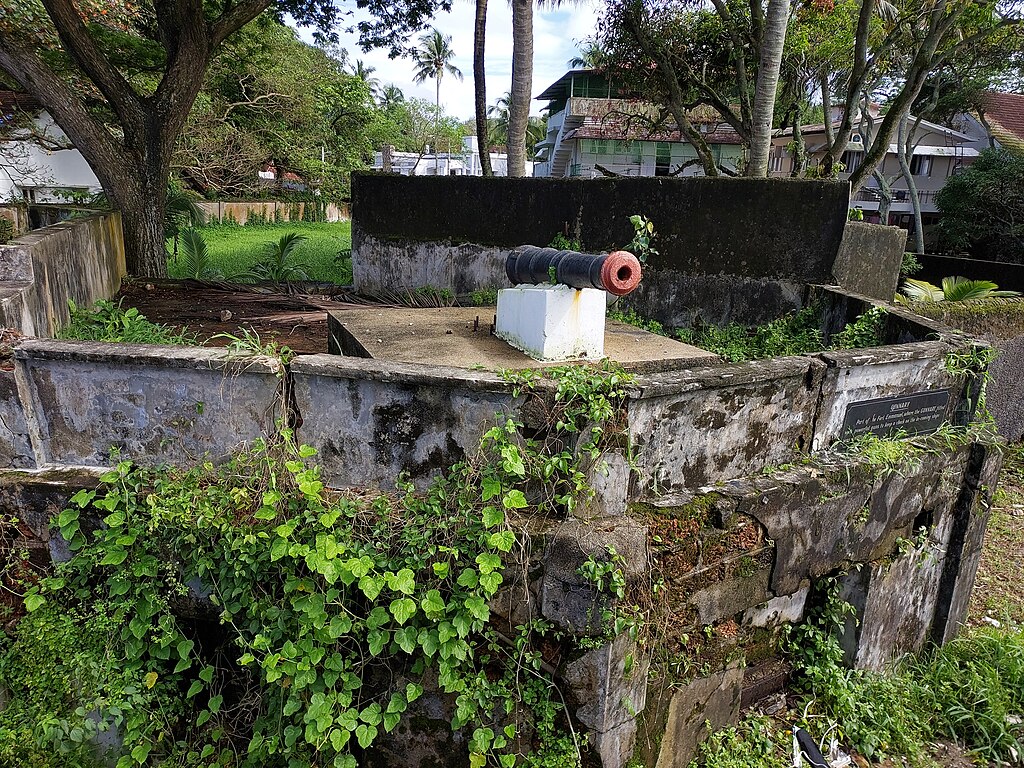
This boutique hotel in Kerala represents the southern luxury experience. Built within heritage buildings dating back to the Dutch colonial period, Forte Kochi combines European architectural elements with Kerala’s unique cultural influences.
The hotel’s location in Fort Kochi puts you at the center of India’s spice trade history. You can walk to Chinese fishing nets, Portuguese churches, and Dutch colonial buildings, then return to air-conditioned comfort and world-class amenities.
Private Guides & Curated Experiences
The difference between a good luxury trip and an unforgettable one often comes down to your guide. In India, this becomes even more critical because the country’s complexity requires interpretation that goes far beyond basic sightseeing.
What You Get
Cultural Translation: India operates on cultural codes that can baffle Western visitors. Why do people touch elderly strangers’ feet? What’s the significance of different colored powders on foreheads? How do you interpret body language and social cues? A premium guide doesn’t just explain these things—they help you participate appropriately.
Exclusive Access: The best guides maintain relationships with temple priests, palace caretakers, and local officials that open doors normally closed to tourists. You might find yourself invited to observe a traditional wedding ceremony, participate in a temple blessing, or visit artisan workshops where techniques haven’t changed in centuries.
Seamless Problem-Solving: Flight delayed? Your guide has backup plans. Restaurant closed? They know the chef personally and can arrange a private meal. Festival crowds making sightseeing impossible? They’ll take you to an equally magnificent but lesser-known alternative.
Personal Safety: While India is generally safe for tourists, having a local expert provides peace of mind. They know which areas to avoid, how to navigate political sensitivities, and what health precautions to take based on current conditions.
The investment in premium guiding services typically ranges from $200-400 per day, but the value extends far beyond the cost. Your guide becomes your cultural ambassador, safety net, and gateway to experiences that independent travelers simply cannot access.
Gourmet India: Michelin-Starred & Royal Dining
Indian cuisine extends far beyond the curry house offerings most Americans know. A Luxury India Trip for Americans opens doors to culinary experiences that rival the world’s best gastronomic destinations.
1. Indian Accent, New Delhi

This Michelin-starred restaurant revolutionizes Indian cuisine by applying molecular gastronomy techniques to traditional recipes. Chef Manish Mehrotra creates dishes that surprise even Indian food experts—blue cheese naan with truffle oil, duck khurchan with roomali roti, and desserts that reimagine classic Indian sweets.
The restaurant’s location within The Manor Hotel creates an intimate atmosphere that encourages long, wine-paired dinners. Reservations require advance planning, but the experience justifies the effort. You’ll understand why food critics consider Indian Accent one of Asia’s most innovative restaurants.
2. Suvarna Mahal, Jaipur
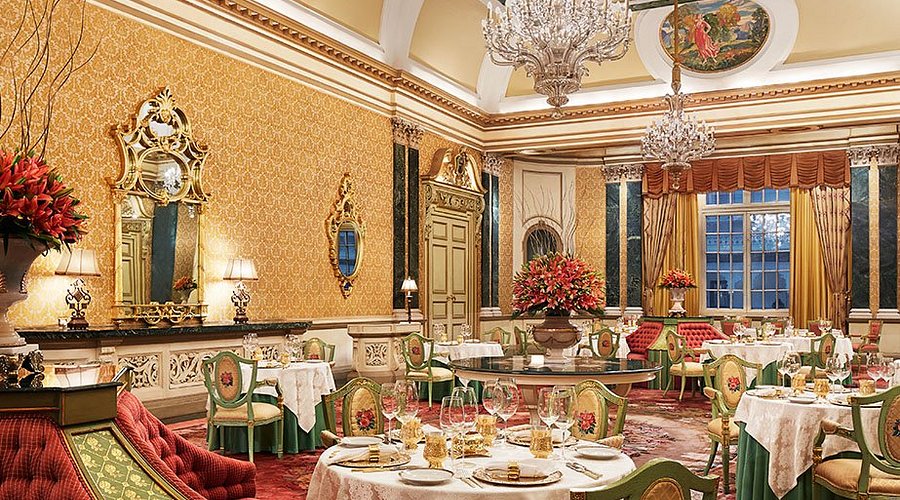
Located within Rambagh Palace, this restaurant serves authentic royal Rajasthani cuisine in the former palace ballroom. The menu features dishes developed for maharajas, prepared using recipes passed down through generations of royal chefs.
What makes dining here special isn’t just the food—it’s the setting. Crystal chandeliers illuminate hand-painted walls while musicians play traditional ragas. The service follows royal protocols, with each course announced by name and significance.
Try the laal maas (red mutton curry) that was once served only to the Maharaja of Jaipur, or the ker sangri (desert vegetables that grow wild in Rajasthan and represent the region’s ability to create luxury from scarcity).
3. Private Fort Dinner in Jodhpur
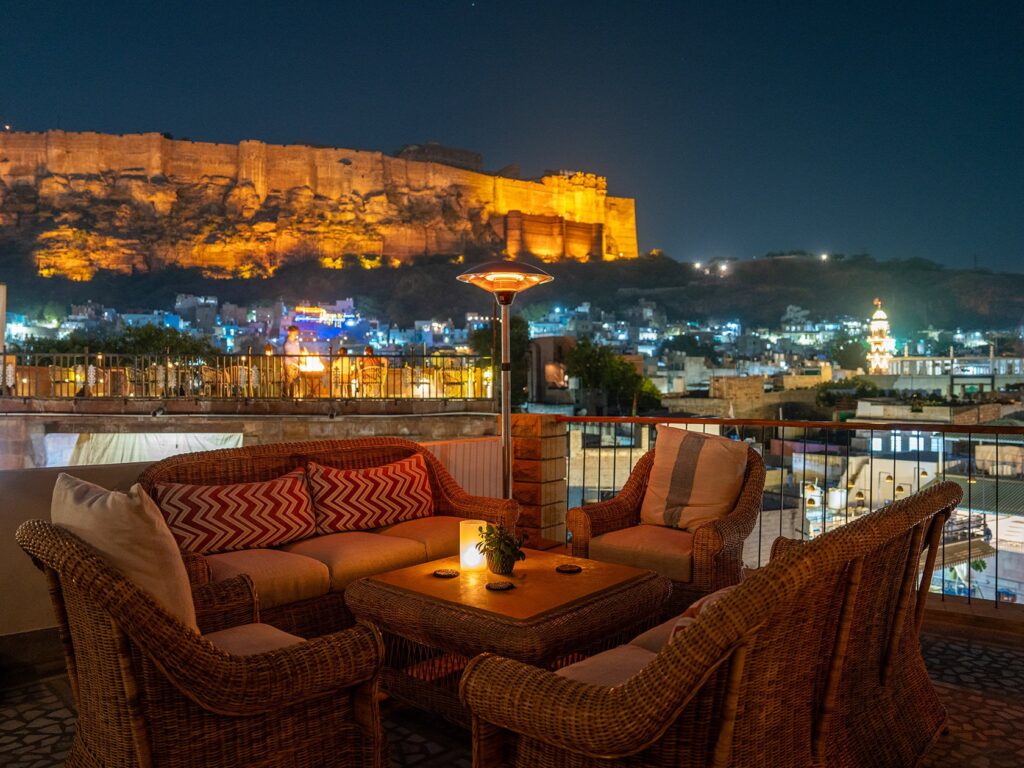
Some experiences can’t be replicated anywhere else in the world. Several luxury operators arrange private dinners within Rajasthani forts, complete with traditional musicians, fire dancers, and cuisine prepared by chefs who learned their craft in royal kitchens.
These dinners typically cost $200-300 per person, but they create memories that last forever. Picture yourself dining under stars within a 15th-century fort, served by staff in traditional attire, while musicians play the same ragas that once entertained maharajas.
The menu focuses on slow-cooked specialties that showcase Rajasthan’s unique culinary tradition—dishes developed to use minimal water and ingredients that could survive desert conditions, yet create complex, satisfying flavors.
Bespoke Add-ons: Make It Even More Special
Luxury travel to India allows for customizations that transform good trips into life-changing experiences. Here are add-ons that consistently create the most memorable moments for American travelers:
Private Helicopter Transfers: Skip the four-hour drive from Delhi to Agra and take a private helicopter instead. You’ll see India’s countryside from above while arriving at the Taj Mahal refreshed and ready for your private sunrise tour.
Bollywood Studio Experience: Spend a day on an actual Bollywood film set, meet stars, and even film a small cameo. These experiences cost $500-1,000 per person but provide insights into India’s massive film industry that you can’t get any other way.
Palace Weddings: Several luxury operators can arrange traditional Indian wedding ceremonies for couples (whether you’re getting married or renewing vows). These aren’t tourist simulations—they’re authentic ceremonies conducted by priests in actual palaces, complete with elephants, horses, and traditional music.
Meditation Retreats with Renowned Masters: Private meditation instruction with teachers who normally work only with advanced practitioners. These sessions often take place in temple settings not accessible to general tourists.
Artisan Workshops: Learn traditional crafts directly from master artisans—block printing in Jaipur, silk weaving in Varanasi, or miniature painting techniques that have been passed down through families for centuries.
Ideal Itinerary (14 Days of Pure Indulgence)
| Day | Location | Highlight |
|---|---|---|
| Day 1–2 | Delhi | Leela Palace stay, private heritage tour, dinner at Indian Accent |
| Day 3–4 | Agra | Express to Agra, Taj Mahal at sunrise, stay at Oberoi Amarvilas |
| Day 5–6 | Jaipur | Stay at Rambagh Palace, elephant interaction, pink city tour |
| Day 7–8 | Udaipur | Lake Palace stay, boat ride, private cooking class |
| Day 9–10 | Jodhpur | Umaid Bhawan stay, Mehrangarh Fort, fort dinner |
| Day 11–12 | Ranthambore | Luxury jungle safari, stay at Aman-i-Khas |
| Day 13–14 | Varanasi | Ganga Aarti, silk weaving tour, spiritual session |
Optional extension: Goa or Kerala for relaxation
Getting There & Around
Transportation planning can make or break a luxury Indian experience. Here’s how to ensure seamless movement throughout your journey:
International Flights: Direct flights from major American cities (New York, San Francisco, Chicago) to Delhi or Mumbai typically cost $1,200-2,000 in business class. Book through luxury travel agents who can arrange airport assistance, fast-track immigration, and private transfers.
Domestic Transportation: Private jets cost $3,000-5,000 per flight hour but eliminate airport hassles and time constraints. For shorter distances, helicopters cost $1,000-2,000 per hour and provide spectacular aerial views. Luxury trains offer the most scenic option for multiple-city touring.
Ground Transportation: Always book private cars with drivers through reputable operators. Costs range from $50-100 per day for luxury vehicles with English-speaking drivers. Avoid taxi services and ride-sharing apps for safety and reliability reasons.
Airport Services: VIP airport assistance costs $100-200 per person but provides expedited check-in, security clearance, and private lounges. These services become essential during peak travel seasons when airports experience significant congestion.
Cost Estimate for a 14-Day Luxury Trip
Budget planning helps set realistic expectations for your Luxury India Trip for Americans. These estimates assume two travelers and peak season rates:
| Component | Estimated Cost (per person) |
|---|---|
| Luxury Trains (Maharajas’ Express or similar) | $7,000 – $10,000 |
| Heritage Hotels & Resorts | $5,000 – $8,000 |
| Private Guides & Experiences | $3,000 – $5,000 |
| Flights & Transfers | $2,000 – $3,500 |
| Total Estimate | $17,000 – $26,500 |
The investment provides value that extends far beyond the trip itself. You’ll return with cultural understanding, personal connections, and memories that influence your perspective for years to come.
Note: Prices vary by season, customization, and group size.
Final Thoughts | Luxury India Trip for Americans
A Luxury India Trip for Americans isn’t just about comfort and exclusivity—it’s about accessing the authentic soul of one of the world’s most complex and rewarding destinations. While budget travel can provide basic exposure to Indian culture, luxury travel provides understanding.

The difference matters because India rewards deeper engagement. Surface-level tourism might show you the Taj Mahal, but luxury access lets you understand why Shah Jahan built it, how the craftsmen achieved such precision, and what the monument means to contemporary Indian identity.
This isn’t about avoiding “real” India—it’s about experiencing it through expert interpretation and exclusive access that reveals layers invisible to casual tourists. Your private guide doesn’t just prevent haggling in markets; they explain the economic systems that make those markets function. Your heritage hotel doesn’t just provide comfort; it connects you to families whose histories shaped the subcontinent.
The memories you create during a luxury Indian journey become part of your personal story. You’ll return home with handcrafted items made by artisans you met personally, recipes learned from royal chefs, and friendships with guides who become cultural ambassadors for life.
More importantly, you’ll understand India in ways that influence how you see the world. The country’s ability to maintain ancient traditions while embracing modern technology, its celebration of diversity within unity, and its philosophy of finding meaning through spiritual practice rather than material accumulation provide perspectives that enrich American travelers long after they return home.
India challenges every assumption about luxury, spirituality, family, community, and success. A luxury approach doesn’t shield you from these challenges—it provides the context and support needed to engage with them meaningfully. That engagement transforms tourists into global citizens and creates advocates for cross-cultural understanding.
FAQ | Luxury India Trip for Americans
Q: Is India safe for luxury travelers?
A: Yes, when proper precautions are taken. Luxury travel operators provide security briefings, reliable transportation, and 24/7 support. The biggest risks involve health issues (easily prevented with proper vaccinations and food precautions) and petty theft (avoided through common-sense precautions and professional guidance).
Q: What’s the best time for a Luxury India Trip for Americans?
A: October through March offers the most comfortable weather for most regions. December through February provides cool, dry conditions ideal for North India touring. March and October work well for South India destinations. Avoid monsoon season (June-September) unless specifically interested in Kerala’s lush landscapes.
Q: Do I need special vaccinations?
A: Consult your doctor 4-6 weeks before departure. Recommended vaccinations typically include hepatitis A and B, typhoid, and Japanese encephalitis. Malaria prophylaxis may be recommended depending on your itinerary. Luxury travel operators provide current health advisories based on specific destinations.
Q: How much should I tip?
A: Tipping practices vary by service type. Hotel staff: $2-5 per service. Private guides: $20-30 per day. Private drivers: $10-15 per day. Restaurant servers: 10-15% if service charge isn’t included. Luxury travel operators typically provide detailed tipping guidelines.
Q: What should I pack?
A: Conservative clothing for temple visits (covering shoulders and knees), comfortable walking shoes, light layers for varying temperatures, sun protection, and any prescription medications. Many luxury hotels provide laundry services, so pack light and purchase items locally for authentic experiences.
Q: Can dietary restrictions be accommodated?
A: Absolutely. India’s vegetarian tradition means plant-based options are readily available. Luxury hotels and restaurants easily accommodate gluten-free, dairy-free, and other dietary needs with advance notice. Your travel operator should provide detailed dietary information to all vendors.
Q: How do I handle currency exchange?
A: Use hotel concierge services or authorized money changers. ATMs are widely available in cities, but inform your bank about travel plans to avoid card blocks. Luxury establishments accept credit cards, but carry cash for tips and small purchases. Avoid street money changers entirely.
Q: What about internet and phone connectivity?
A: Major cities and luxury hotels offer reliable WiFi. Purchase a local SIM card for data and calling, or check if your US carrier offers international plans. Some luxury travel operators provide portable WiFi devices for seamless connectivity throughout your journey.
Ready to Live the Dream?
Let Ghum India Ghum plan your bespoke luxury India itinerary. From five-star stays to five-sensory experiences—we take care of everything, so you can just soak it all in.
Contact us today for a free luxury consultation and quote.

